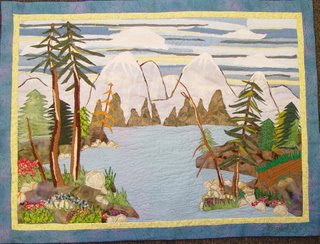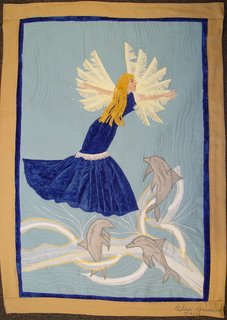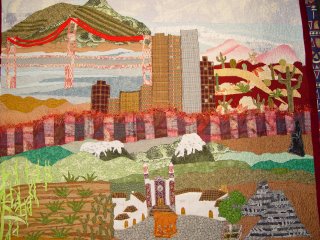
La Charreria Mujeres Charras O Escaramuzas by Luzma Bucio
En México con la llegada de los españoles se formaron las grandes haciendas, dando lugar a la llegada de trabajadores para atender al ganado. Esto obligo a los hacendados a buscar a los mestizos para atender dicho ganado. Los mestizos buscaron nuevas técnicas para domesticar a los animales. Creándose así los chinacos como fueron llamados en aquel tiempo ahora son charros que se dedican ir por pueblos llevando este deporte mexicano esto a traspasado fronteras, ya que tenido concursos fuera del país.
Las suertes charras que ahora se conocen se llaman LAZO A CABALLO, COLEADERO, JINETEAR, AMANSAR YEGUAS, SUERTES A PIE Y A CABALLO, Y ESCARAMUSAS.
En este cuadro me enfoque en las escaramuzas. Ya que fue todo
un reto para las mujeres poder entrar en un ruedo montadas a caballo. El dominar un caballo les dio el pase para un papel en una careada. Las escaramuzas se presentan después del PASO DE LA MUERTE. Son las que adornan nuestro deporte nacional y le dan elegancia como toda MUJER CHARRA.
TRADICION MEXICANA, ORGULLO DE NUESTRA TIERRA.
The Cowgirls Of The Mexican Rodeo by Luzma Bucio
When the Spanish arrived to Mexico they built huge haciendas. The Spanish needed workers to care for their cattle. Even though, at that time the Spanish did not like the Mestizos, they needed their help to take care of their cattle. The Mestizos looked for new ways to domesticate the animals. In this way, the first chinacos, “cowboys” were born during that time. Now they are called Charros. They are dedicated to going to pueblos continuing this Mexican tradition and sport. This sport has traveled across borders, and now the tradition takes place outside of the country of Mexico.
The skills that the Charros, cowboys, demonstrate are: lassoing,
lassoing tricks while on horse back, like jumping through the lasso while it is spinning and rider is standing on a horse; coleadero, the cowboy grabs a calf by the neck and flips it while being timed; jinetear, bucking bull; amansar yeguas, like coleadero, except the cowboy ties the calf’s legs. suertes a pie y a caballo, fall an animal with a lasso, from a horse or on foot; escaramusas, cowgirls riding in sequence.
In this quilt I focus on the cowgirls. It was very difficult for women to become part of the rodeo, they had to ride sidesaddle. The first cowgirl in Mexico rode in 1810. By riding horses in the show, women participated in the rodeo ring for the first time. The women’s horse show takes place after the Paso de la Muerte (an event where a cowboy jumps from one bucking bull to a second one.) Now women can participate in all of the rodeo sports. These cowgirls bring beauty and elegance to our national / international sport.
A MEXICAN TRADITION, PRIDE OF OUR LAND







